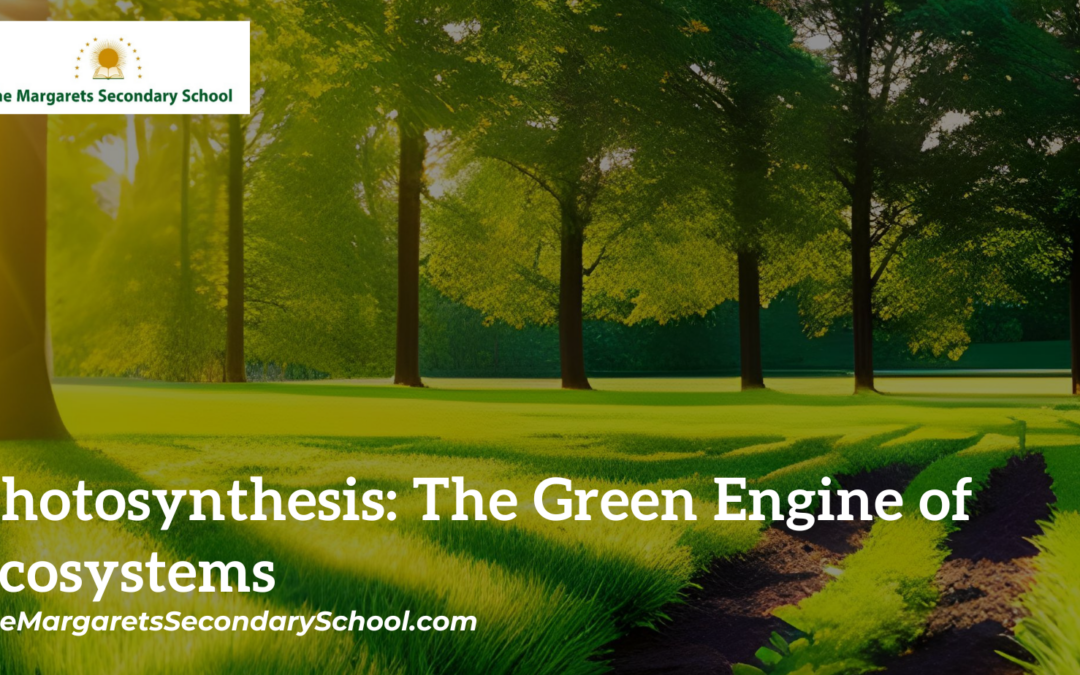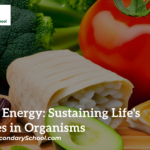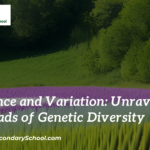Photosynthesis in Ecosystems
In the bustling theater of Earth’s ecosystems, a captivating performance is unfolding daily—one that is powered by a remarkable biochemical process known as photosynthesis. This process, performed primarily by plants and certain microorganisms, is not only essential for their survival but also forms the cornerstone of life on our planet. From lush forests to the tiniest microorganisms, photosynthesis plays a central role in shaping ecosystems and sustaining the diverse web of life.
Unveiling Photosynthesis: Nature’s Magic Trick
Photosynthesis is a complex, elegant process through which plants, algae, and some bacteria harness the energy of sunlight to convert carbon dioxide and water into glucose (a sugar) and oxygen. This energy-conversion feat takes place in chloroplasts—green pigmented structures within plant cells—where the magic of photosynthesis unfolds.
The equation for photosynthesis can be simplified as follows:
6 CO2 + 6 H2O + light energy → C6H12O6 + 6 O2
This chemical formula not only captures the essence of photosynthesis but also underscores its significance in cycling carbon and oxygen within ecosystems.
The Dance of Light and Pigments: Absorption and Conversion
Photosynthesis is a two-stage process: the light-dependent reactions and the light-independent reactions, also known as the Calvin cycle. During the light-dependent reactions, pigments like chlorophyll absorb light energy and convert it into chemical energy stored in the form of adenosine triphosphate (ATP) and nicotinamide adenine dinucleotide phosphate (NADPH). These energy-rich molecules power the Calvin cycle, where carbon dioxide is assimilated into sugars.
The remarkable aspect of photosynthesis is its ability to capture and utilize solar energy, effectively transforming it into the fuel that drives the world’s ecosystems.
Photosynthesis and Ecosystems: The Foundation of Life
Photosynthesis is the engine that fuels the biosphere. It forms the foundation of food chains and food webs, as plants and algae are primary producers—organisms that synthesize their own food using sunlight. These primary producers are the basis of terrestrial and aquatic food chains, serving as nourishment for herbivores, which in turn feed carnivores and other consumers.
Photosynthesis also contributes to the cycling of oxygen and carbon dioxide, two critical gases for life. As plants release oxygen during photosynthesis, it replenishes the atmosphere with this life-sustaining gas, while also absorbing carbon dioxide, a greenhouse gas implicated in climate change.
Human Impact: Protecting the Photosynthetic Balance
Human activities have altered the delicate balance of photosynthesis within ecosystems. Deforestation reduces the number of photosynthesizing plants, leading to decreased oxygen production and less carbon dioxide uptake. Additionally, carbon emissions from burning fossil fuels contribute to elevated levels of atmospheric carbon dioxide, which can impact plant growth and disrupt ecosystems.
Conservation efforts are crucial to preserving the delicate balance of photosynthesis. Restoring habitats, combating deforestation, and reducing carbon emissions are steps we can take to ensure that the green engine of ecosystems continues to function effectively.
Conclusion: Nurturing Nature’s Sunlight Symphony
Photosynthesis is the symphony that resonates through ecosystems, connecting all living organisms in a delicate dance of energy conversion and carbon cycling. From the tiniest bacteria to the mightiest trees, the ability to capture sunlight and convert it into sustenance is a testament to the intricate beauty of life on Earth. By understanding and appreciating the significance of photosynthesis, we can become stewards of ecosystems, ensuring that this remarkable process continues to inspire and sustain life for generations to come.





